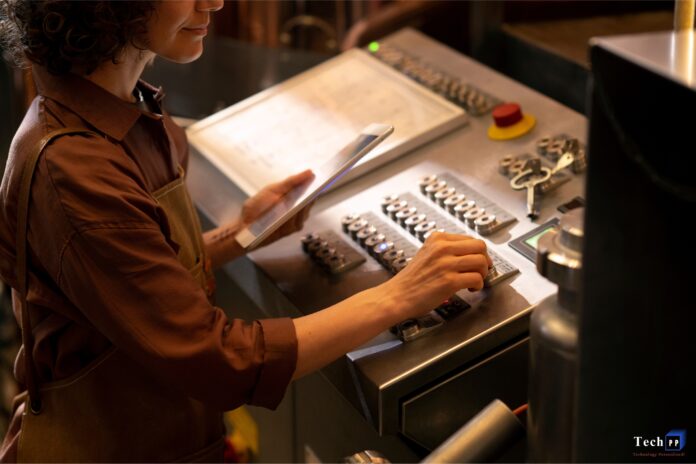Rewinder Machine! Choosing the right equipment is a decision that shapes the quality and consistency of production. Specialized machines are a core part of many manufacturing processes, ensuring materials are processed with accuracy and efficiency. Taking the time to evaluate essential factors before investing creates a smoother path to productivity. For businesses seeking to strengthen their operations, examining these considerations is the first step toward making the right choice.
Core Performance Aspects of Slitter Rewinders
The performance of a slitter rewinder machine (140) influences every stage of production. Web tension control ensures that material runs evenly without wrinkles or slack, protecting the integrity of each roll. Precise slitting mechanisms allow clean cuts, which are essential for maintaining product quality.
Advanced features, such as automatic monitoring, provide operators with accurate feedback to reduce errors. These capabilities support consistent results and minimize material waste. A strong performance foundation helps keep production stable and efficient over extended periods of use.
Durability and Maintenance Requirements
Durability determines how long a machine can remain reliable under constant operation. Equipment built with high-strength components, such as reinforced steel frames, can handle demanding workloads while maintaining alignment and precision. Maintenance should also be straightforward, with accessible parts that allow quick servicing.
Machines designed with preventive checks in mind help reduce downtime and keep the line running smoothly. Predictive tools, such as vibration sensors, can alert operators to early signs of wear. Focusing on durability and practical maintenance safeguards both performance and long-term value.
Production Speed and Efficiency
Production demands often rely on the balance between speed and accuracy. Machines capable of higher slitting rates can process large volumes of material quickly, helping meet strict delivery schedules. Drive systems such as servo motors, improve responsiveness and maintain uniform tension even at faster speeds.
Automated functions, including roll change systems, reduce manual handling and cut down on idle time between runs. Efficiency comes from minimizing waste, as precise controls allow materials to be used effectively. A well-calibrated system maintains output levels without compromising on quality.
Material Compatibility and Adaptability
Different industries require machines that can process a wide variety of substrates. Paper, plastic films, laminates, and nonwoven fabrics each present unique handling needs. A machine that can adapt to different thicknesses and widths provides flexibility for diverse production goals.
Features such as adjustable knife holders and shaftless winding systems enhance adaptability. Edge guiding tools further support precision by keeping the material aligned throughout the process. This versatility ensures that the equipment can handle multiple jobs without lengthy setup times, making it a valuable asset in busy facilities.
Cost-Effectiveness and Operational Value
Looking beyond the initial purchase price is important when considering overall value. Operational costs, such as power consumption and labor, add up over time. Machines that include energy-efficient motors or automated adjustments reduce expenses across the life cycle of the equipment.
Automation lessens the need for constant operator involvement, freeing skilled staff to focus on other tasks. Evaluating total ownership costs, which include maintenance, energy, and potential savings, provides a clearer picture of long-term value. Choosing equipment with balanced features helps achieve steady returns while supporting production goals.
Safety and Operator Comfort
Safety is an integral factor that should never be overlooked. Machines designed with protective enclosures, emergency stop functions, and clear control panels reduce the risk of accidents. Operator comfort is equally important, as intuitive controls and ergonomic layouts improve ease of use.
Training requirements are minimized when the interface is simple, allowing staff to operate the equipment with confidence. Safe design helps protect materials from damage during processing. Prioritizing both safety and usability ensures smoother daily operations while supporting a secure work environment.
Technology and Future Readiness
Advanced features can extend the usefulness of a machine well into the future. Digital interfaces, data collection tools, and remote diagnostic options help keep production aligned with modern standards. Integration with existing systems allows smoother workflow management.
Some machines include software that records operational statistics, giving managers insight into performance trends. While these features may seem secondary, they provide a foundation for adapting to changing production requirements. Investing in forward-ready technology creates opportunities for growth while maintaining current efficiency.
Selecting a slitter rewinder machine (140) calls for attention to performance, durability, efficiency, material compatibility, safety, and technology integration. Each element contributes to smooth production and dependable outcomes. Concentrating on these essentials helps businesses align equipment choices with present demands and future objectives. A carefully chosen system can serve as the foundation for consistent output, long-term growth, and operational success. Manufacturers ready to upgrade should review these factors and move toward stronger production capabilities.


